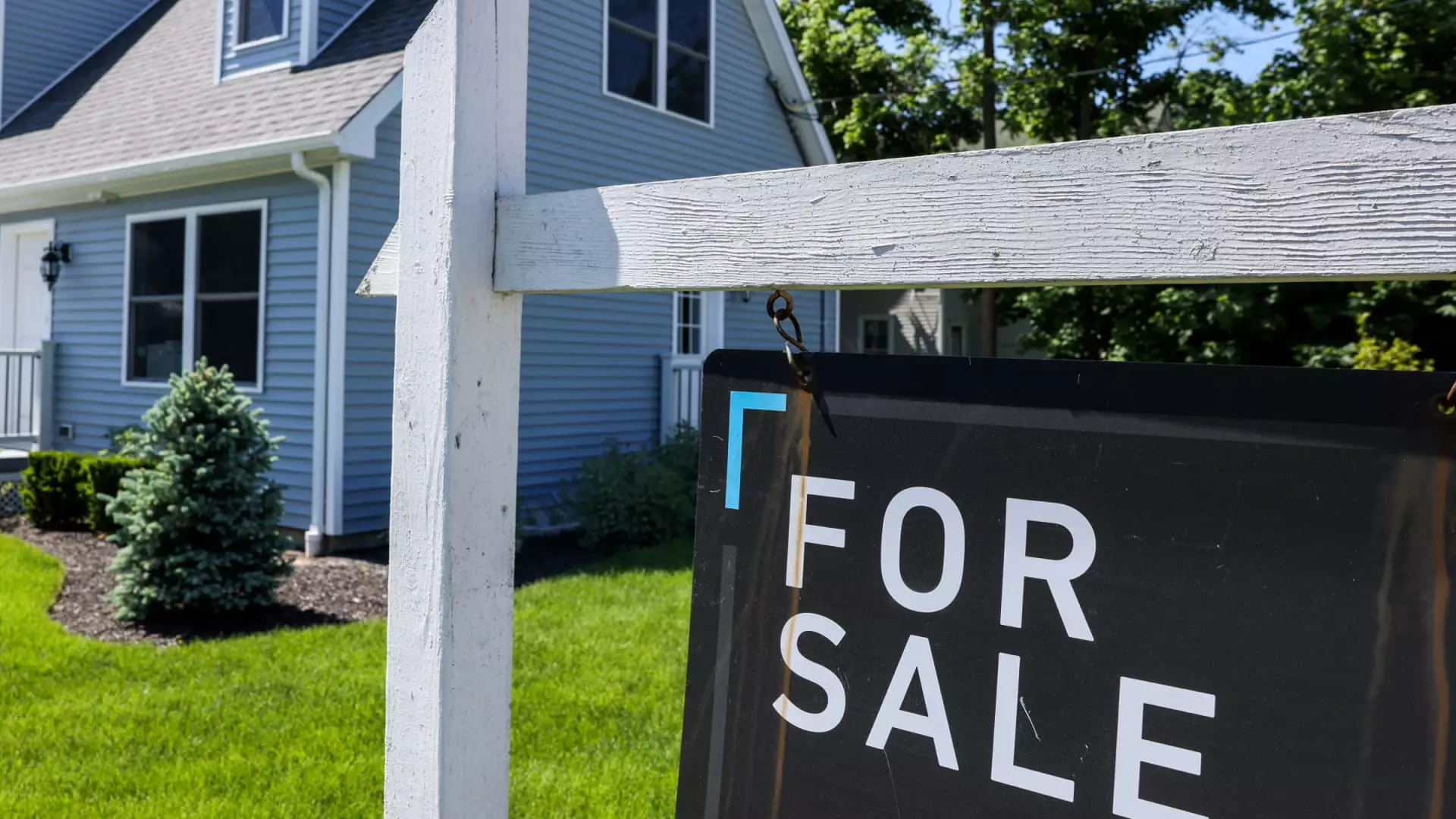The recent uptick in mortgage applications, heralded as a sign of market vitality, appears more like a fleeting illusion than a genuine turnaround. While the Mortgage Bankers Association reports a 9.4% weekly surge, this temporary spike masks underlying vulnerabilities. A modest dip in interest rates, from 6.79% to 6.77%, sparked a flurry of activity—yet this minor change hardly signals a robust recovery. It’s crucial to recognize that these fluctuations are largely superficial; mortgage rates are inherently volatile, oscillating due to sentiment, policy shifts, or even seasonal adjustments.
This false sense of optimism risks obscuring the deeper malaise affecting the housing market. The rebound in refinance applications, which increased 9%, still sits well below the levels needed to suggest sustained strength. Despite the minor rise, refinance activity remains critically weak compared to previous years, a reflection of stubbornly high interest rates that have drained enthusiasm from homeowners seeking to capitalize on lower rates. Thus, the current “growth” in mortgage demand could very well be a mirage—doubled by short-term rate movements rather than fundamental market health.
Underlying Challenges That No Temporary Dip Can Mask
The story isn’t just about numbers fluctuating week-to-week; it’s about the fundamental shifts in homebuyer psychology and market conditions. Joel Kan’s comment about increasing housing supply and moderating home-price growth presents a veneer of optimism, but beneath lies a more complicated reality. The average loan size for purchase applications has shrunk, reaching its lowest point since January 2025. This suggests that buyers are becoming more cautious, perhaps driven by economic uncertainty, inflation fears, or stagnant wage growth.
Moreover, the disconnect between mortgage demand and actual home sales highlights a market teetering on instability. Pending sales—contracts signed but not yet closed—have not kept pace with the increase in mortgage applications. This divergence indicates that many buyers may be hesitant or facing heightened cancellation risks amid a jittery economic landscape. Consumer sentiment remains unsteady, and high cancellation rates reinforce the idea that current demand is fragile.
Interest rates have begun climbing again, further complicating the picture. Though some analysts suggest this could be a transient move, it undermines any confidence that rates might remain low for long. The market’s recent sensitivity to minor rate shifts demonstrates how precarious the current environment is—what appears as a rally is perhaps merely a correction amid ongoing volatility.
Beware of Overconfidence in Shifting Market Trends
The resilience of the housing market under these circumstances warrants skepticism. Relying on short-term fluctuations as indicators of a sustained recovery is misguided. It’s essential to recognize that broader economic forces—consumer confidence, political stability, inflation—play a decisive role in shaping the real estate landscape. The current uptick in mortgage activity may be a temporary blip rather than a sign of lasting strength.
As a center-leaning observer, I view this situation as a reminder to approach market optimism with caution. My concern is that policymakers and industry stakeholders might prematurely celebrate minor wins while ignoring the deeper vulnerabilities—such as high cancellation rates, stagnant wages, and cautious homebuyers—that threaten to derail any fragile recovery. The housing market’s true health cannot be gauged solely through fleeting rate dips or weekly application surges; instead, it requires a sober assessment of enduring economic realities that may challenge the so-called stability so confidently proclaimed today.


Leave a Reply